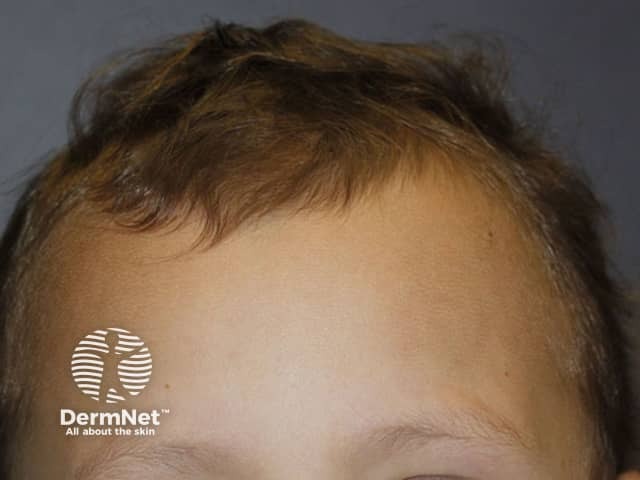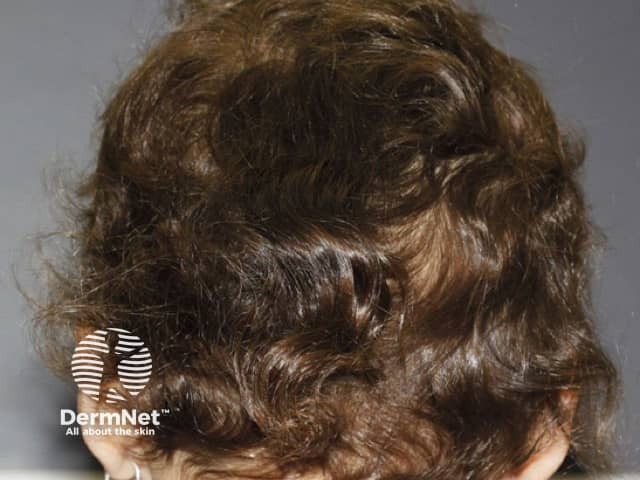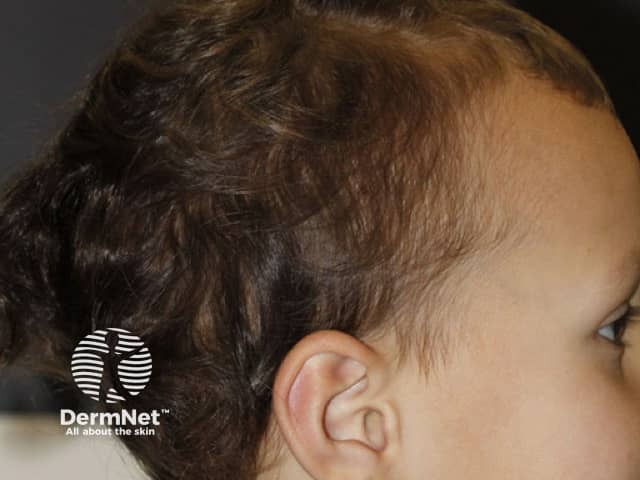Main menu
Common skin conditions

NEWS
Join DermNet PRO
Read more
Quick links
Author: Dr Eugene Tan, Dermatology Registrar, Melbourne, Australia, 2010.
Short anagen syndrome is a cause of abnormally short scalp hair.
Anagen is the growing phase of the normal hair cycle and is followed by telogen – the hair sheds or moults during telogen. Another anagen hair then starts to grow in the same follicle.
In short anagen syndrome, the duration of anagen may be only a year or two, compared to the normal 4 to 7 years. It usually presents in childhood, with parents reporting that their child ‘can't grow their hair long’ or has ‘never had a haircut’.
Its cause is unknown. Most reported cases have occurred in single members of a family and so far no genetic abnormality has been found [1–5]. Short anagen syndrome was first described in 1991 and there are few case reports [2–5].

Short anagen hair

Short anagen hair

Short anagen hair
Short anagen syndrome must be differentiated from other conditions causing short hair. In short anagen syndrome, the hair shaft is otherwise normal, apart from its length. The density of the hair is normal, the hairs are not fragile, and they do not break easily.
The hair pull test is often normal. This test is conducted by grasping and then gently pulling on a group of 20 to 50 scalp hairs. The number of hairs that can easily be extracted is normally around 2 to 10, mainly telogen hairs. A normal result in short anagen syndrome helps differentiate it from loose anagen syndrome, in which many more hairs than normal are extracted, or other hair shedding syndromes such as telogen effluvium, which will have a higher percentage of telogen (bulb) hairs.
The rest of the physical examination is normal without any abnormalities in skin, teeth or nails. Children with short anagen syndrome have normal mental and physical development.
Investigations may include:
Minoxidil 5% solution applied twice daily is believed to stimulate hair follicles to enter into anagen and prolong the duration of anagen. However, its efficacy has not been well established.
Most reported cases of short anagen syndrome have persisted to adulthood. This is in contrast to loose anagen syndrome, which improves with age.